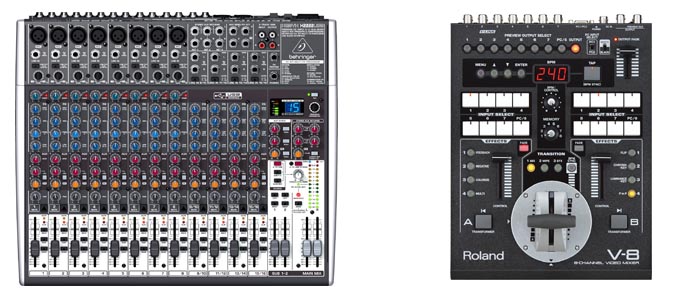
Audio mixing is the process of combining multiple audio sources (such as vocals, instruments, and sound effects) into a cohesive and balanced final mix. It is a critical step in music production, live sound reinforcement, film, television, and multimedia productions. Here are some key details about audio mixing:
- Basic Components of Audio Mixing:
- Channels: Each audio source occupies a channel in the mixer, which can be adjusted for volume, panning (left-right positioning), and equalization (EQ).
- Level Adjustment: Mixing involves setting appropriate volume levels for each track to ensure they blend well together without overpowering or being drowned out by other elements.
- Panning: Adjusting the placement of each sound source in the stereo field. This creates a sense of space and separation between instruments or vocals.
- Equalization (EQ): Using EQ to shape the frequency response of each track. This can enhance clarity, reduce muddiness, and ensure each element occupies its own sonic space.
- Effects: Applying effects like reverb, delay, compression, and modulation to individual tracks or the overall mix to add depth, dynamics, and character.
- Tools Used in Audio Mixing:
- Mixing Console or DAW: Mixing can be done on hardware mixing consoles or digital audio workstations (DAWs) like Pro Tools, Logic Pro, Ableton Live, etc.
- Plugins: Virtual effects and processors within DAWs are used for EQ, compression, reverb, and other effects.
- Monitoring: High-quality studio monitors or headphones are essential for accurate listening and making informed mixing decisions.
- Objectives of Audio Mixing:
- Balance: Achieving a balanced mix where each sound source is audible and contributes effectively to the overall sound.
- Clarity: Ensuring that each element can be heard distinctly without masking or clutter.
- Depth and Dimension: Creating a sense of space, depth, and dynamics through panning, reverb, and other spatial effects.
- Emotional Impact: Enhancing the emotional impact of the music or audio content by emphasizing important elements and creating a coherent sonic picture.
- Techniques and Skills:
- Automation: Automating changes in volume, panning, and effects parameters over time to add movement and dynamics to the mix.
- Reference Mixing: Comparing the mix against reference tracks to gauge tonal balance, dynamics, and overall quality.
- Critical Listening: Developing the ability to discern subtle nuances and make precise adjustments to achieve the desired sound.
- Considerations:
- Genre: Mixing techniques can vary significantly depending on the genre of music or type of audio content (e.g., classical music, rock, EDM, podcasts).
- Environment: Mixing in a well-treated acoustic environment with accurate monitoring is crucial for making informed decisions.
- Collaboration: Often, mixing engineers work closely with producers, artists, and other stakeholders to achieve the desired artistic vision.
Overall, audio mixing is both an art and a technical skill that requires a deep understanding of sound, music theory, and technical equipment to deliver professional-quality results in various audio production contexts.
